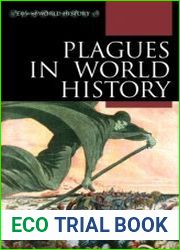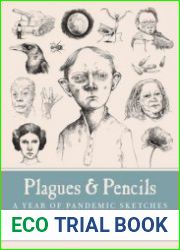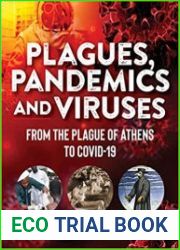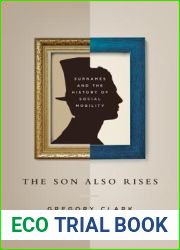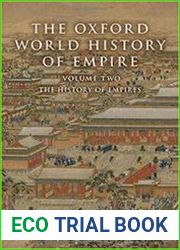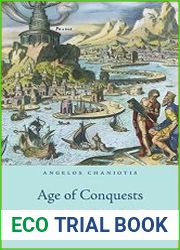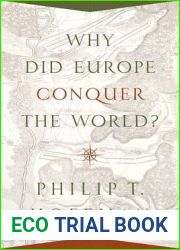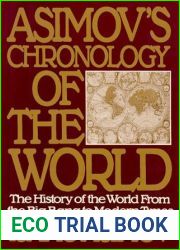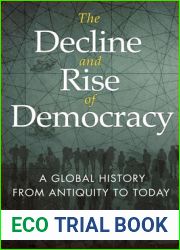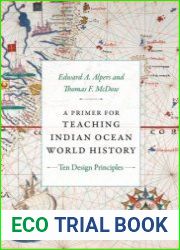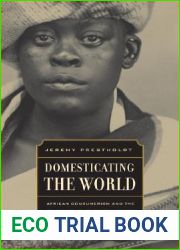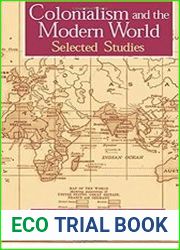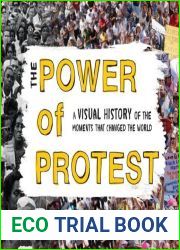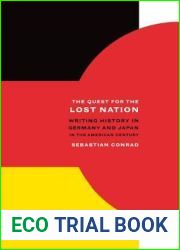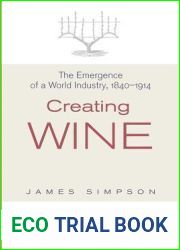
BOOKS - HISTORY - Plagues in World History

Plagues in World History
Author: Aberth, John
Year: 2011
Pages: 258
Format: PDF
File size: 13.7 MB
Language: ENG

Year: 2011
Pages: 258
Format: PDF
File size: 13.7 MB
Language: ENG

. The book begins with an introduction to the nature of pandemics and how they have affected human history. The author then delves into the first recorded pandemic - the Plague of Justinian (541-750 CE) which spread throughout the Mediterranean basin killing an estimated 25 million people or 40% of the population. In addition to its devastating effects on human populations this pandemic also had significant economic social and political impacts including the decline of the Roman Empire. Next the author explores the Black Death (1346-1400 CE) which spread throughout Europe Asia and North Africa killing between 75 and 200 million people and forever altering the course of medieval European society. The author discusses the religious and socioeconomic impacts of this plague as well as its role in shaping modern Western society. Smallpox is the subject of the next chapter which discusses its early origins in Africa and its spread throughout the world via trade and colonization. The author examines the efforts of doctors and scientists to eradicate smallpox and the success of these efforts in achieving global eradication in 1980. Tuberculosis has been a constant presence in human history since ancient times but it was not until the Industrial Revolution that it became a major urban scourge. The author describes how tuberculosis affected Victorian society and how it was eventually controlled through a combination of improved sanitation and new drugs. Cholera has long been associated with poverty and poor living conditions and the author explores its many outbreaks and effects on society throughout history including its role in the Opium Wars and its impact on British India.
. Книга начинается с введения в природу пандемий и того, как они повлияли на историю человечества. Затем автор углубляется в первую зарегистрированную пандемию - чуму Юстиниана (541-750 годы н. э.), которая распространилась по всему Средиземноморскому бассейну, убив, по оценкам, 25 миллионов человек или 40% населения. В дополнение к своим разрушительным последствиям для населения эта пандемия также имела значительные экономические, социальные и политические последствия, включая упадок Римской империи. Далее автор исследует Черную смерть (1346-1400 гг. н.э.), которая распространилась по всей Европе, Азии и Северной Африке, убив от 75 до 200 миллионов человек и навсегда изменив курс средневекового европейского общества. Автор обсуждает религиозные и социально-экономические последствия этой чумы, а также ее роль в формировании современного западного общества. Оспа является предметом следующей главы, в которой обсуждается ее раннее происхождение в Африке и ее распространение по всему миру посредством торговли и колонизации. Автор рассматривает усилия врачей и ученых по искоренению оспы и успех этих усилий в достижении глобальной ликвидации в 1980 году. Туберкулез был постоянным присутствием в истории человечества с древних времен, но только после промышленной революции он стал основным городским бедствием. Автор описывает, как туберкулез повлиял на викторианское общество и как его в конечном итоге удалось контролировать с помощью сочетания улучшенных санитарных условий и новых лекарств. Холера долгое время ассоциировалась с бедностью и плохими условиями жизни, и автор исследует ее многочисленные вспышки и влияние на общество на протяжении всей истории, включая ее роль в опиумных войнах и ее влияние на Британскую Индию.
. livre commence par une introduction à la nature des pandémies et à leur impact sur l'histoire humaine. L'auteur s'enfonce ensuite dans la première pandémie enregistrée, la peste de Justinian (541-750 n. e.), qui s'est répandue dans tout le bassin méditerranéen, tuant environ 25 millions de personnes, soit 40 % de la population. Outre ses effets dévastateurs sur la population, cette pandémie a également eu des conséquences économiques, sociales et politiques importantes, notamment le déclin de l'Empire romain. L'auteur étudie ensuite la Mort noire (1346-1400), qui s'est répandue dans toute l'Europe, l'Asie et l'Afrique du Nord, tuant 75 à 200 millions de personnes et changeant pour toujours le cours de la société européenne médiévale. L'auteur discute des conséquences religieuses et socioéconomiques de cette peste, ainsi que de son rôle dans la formation de la société occidentale moderne. La variole fait l'objet du chapitre suivant, qui traite de ses origines précoces en Afrique et de sa propagation dans le monde entier par le commerce et la colonisation. L'auteur examine les efforts déployés par les médecins et les scientifiques pour éradiquer la variole et le succès de ces efforts pour parvenir à l'élimination mondiale en 1980. La tuberculose a été une présence constante dans l'histoire de l'humanité depuis les temps anciens, mais ce n'est qu'après la révolution industrielle qu'elle est devenue le principal fléau urbain. L'auteur décrit comment la tuberculose a affecté la société victorienne et comment elle a finalement été contrôlée grâce à une combinaison de meilleures conditions sanitaires et de nouveaux médicaments. choléra a longtemps été associé à la pauvreté et aux mauvaises conditions de vie, et l'auteur étudie ses nombreuses épidémies et son impact sur la société tout au long de l'histoire, y compris son rôle dans les guerres de l'opium et son impact sur l'Inde britannique.
. libro comienza con una introducción a la naturaleza de las pandemias y cómo han afectado a la historia de la humanidad. autor profundiza entonces en la primera pandemia registrada, la plaga de Justiniano (541-750 d. e.), que se extendió por toda la cuenca mediterránea, matando a un estimado de 25 millones de personas o el 40% de la población. Además de sus devastadoras consecuencias para la población, esta pandemia también ha tenido importantes consecuencias económicas, sociales y políticas, incluida la decadencia del Imperio romano. A continuación, el autor explora la Muerte Negra (1346-1400 d. C.), que se extendió por , Asia y el norte de África, matando a entre 75 y 200 millones de personas y cambiando para siempre el rumbo de la sociedad medieval europea. La autora discute las implicaciones religiosas y socioeconómicas de esta plaga, así como su papel en la formación de la sociedad occidental moderna. La viruela es el tema del siguiente capítulo, que discute su origen temprano en África y su distribución por todo el mundo a través del comercio y la colonización. autor examina los esfuerzos de médicos y científicos para erradicar la viruela y el éxito de estos esfuerzos para lograr la eliminación global en 1980. La tuberculosis ha sido una presencia constante en la historia de la humanidad desde la antigüedad, pero no fue hasta después de la revolución industrial que se convirtió en el principal desastre urbano. autor describe cómo la tuberculosis afectó a la sociedad victoriana y cómo finalmente se pudo controlar con una combinación de mejores condiciones sanitarias y nuevos medicamentos. cólera ha sido asociado durante mucho tiempo con la pobreza y las malas condiciones de vida, y la autora investiga sus múltiples brotes e impacto en la sociedad a lo largo de la historia, incluyendo su papel en las guerras del opio y su influencia en la India británica.
. O livro começa com a introdução de pandemias na natureza e como elas influenciaram a história da humanidade. Em seguida, o autor aprofundou-se na primeira pandemia registrada, a praga de Justiniano (541-750. C.), que se espalhou por toda a bacia mediterrânica, matando estimadamente 25 milhões de pessoas ou 40% da população. Além das suas consequências devastadoras para a população, a pandemia também teve consequências econômicas, sociais e políticas significativas, incluindo a decadência do Império Romano. O autor explora a Morte Negra (1346-1400), que se espalhou por toda a , Ásia e Norte da África, matando entre 75 e 200 milhões de pessoas e mudando para sempre o rumo da sociedade medieval europeia. A autora discute as consequências religiosas e socioeconômicas desta praga, bem como o seu papel na formação da sociedade ocidental moderna. A varíola é objeto do capítulo seguinte, que discute sua origem precoce em África e sua propagação ao redor do mundo através do comércio e da colonização. O autor considera os esforços de médicos e cientistas para erradicar a varíola e o sucesso desses esforços para alcançar a erradicação global em 1980. A tuberculose tem sido uma presença constante na história da humanidade desde os tempos antigos, mas só depois da revolução industrial tornou-se o principal flagelo urbano. O autor descreve como a tuberculose afetou a sociedade vitoriana e como foi eventualmente controlada através de uma combinação de melhores condições sanitárias e novos medicamentos. A cólera tem sido associada à pobreza e às más condições de vida durante muito tempo, e a autora tem explorado seus múltiplos surtos e efeitos na sociedade ao longo da história, incluindo seu papel nas guerras do ópio e sua influência na Índia Britânica.
. Il libro inizia con l'introduzione delle pandemie e il modo in cui hanno influenzato la storia dell'umanità. Poi l'autore approfondisce la prima pandemia registrata, la peste di Giustiniano (541-750). C.), che si è diffuso in tutto il bacino del Mediterraneo, uccidendo 25 milioni di persone, ovvero il 40% della popolazione. Oltre ai suoi effetti devastanti sulla popolazione, questa pandemia ha avuto anche notevoli conseguenze economiche, sociali e politiche, compreso il declino dell'impero romano. L'autore esplora poi la Morte Nera (1346-1400), che si è diffusa in tutta , Asia e Nord Africa, uccidendo tra 75 e 200 milioni di persone e cambiando per sempre la rotta della società medievale europea. L'autrice discute delle conseguenze religiose ed economiche di questa peste e del suo ruolo nella formazione di una società occidentale moderna. Il vaiolo è oggetto del capitolo successivo, in cui si discute della sua origine precoce in Africa e della sua diffusione in tutto il mondo attraverso il commercio e la colonizzazione. L'autore sta esaminando gli sforzi di medici e scienziati per sradicare il vaiolo e il successo di questi sforzi per raggiungere l'eliminazione globale nel 1980. La tubercolosi è stata una presenza costante nella storia dell'umanità fin dai tempi antichi, ma solo dopo la rivoluzione industriale divenne il principale flagello urbano. L'autore descrive come la tubercolosi ha influenzato la società vittoriana e come alla fine è stato controllato attraverso una combinazione di migliori condizioni igieniche e nuovi farmaci. Il colera è stato a lungo associato alla povertà e alle cattive condizioni di vita, e l'autrice sta esplorando i suoi numerosi focolai e gli effetti sulla società nel corso della storia, compreso il suo ruolo nelle guerre dell'oppio e la sua influenza sull'India britannica.
. Das Buch beginnt mit einer Einführung in die Natur von Pandemien und wie sie die Geschichte der Menschheit beeinflusst haben. Dann taucht der Autor tiefer in die erste registrierte Pandemie ein - die Justinianische Pest (541-750 n. Chr. e.), die sich im gesamten Mittelmeerraum ausgebreitet hat und schätzungsweise 25 Millionen Menschen oder 40% der Bevölkerung getötet hat. Neben ihren verheerenden Folgen für die Bevölkerung hatte diese Pandemie auch erhebliche wirtschaftliche, soziale und politische Folgen, darunter den Niedergang des Römischen Reiches. Als nächstes untersucht der Autor den Schwarzen Tod (1346-1400 n. Chr.), der sich in ganz , Asien und Nordafrika ausbreitete, 75 bis 200 Millionen Menschen tötete und den Kurs der mittelalterlichen europäischen Gesellschaft für immer veränderte. Der Autor diskutiert die religiösen und sozioökonomischen Auswirkungen dieser Plage sowie ihre Rolle bei der Gestaltung der modernen westlichen Gesellschaft. Die Pocken sind Gegenstand des nächsten Kapitels, das ihre frühen Ursprünge in Afrika und ihre weltweite Verbreitung durch Handel und Kolonisation diskutiert. Der Autor untersucht die Bemühungen von Ärzten und Wissenschaftlern, die Pocken auszurotten, und den Erfolg dieser Bemühungen, 1980 eine globale Ausrottung zu erreichen. Tuberkulose ist seit der Antike eine ständige Präsenz in der Geschichte der Menschheit, aber erst nach der industriellen Revolution wurde sie zu einer großen städtischen Katastrophe. Der Autor beschreibt, wie Tuberkulose die viktorianische Gesellschaft beeinflusst hat und wie sie schließlich durch eine Kombination aus verbesserten sanitären Einrichtungen und neuen Medikamenten kontrolliert werden konnte. Cholera wird seit langem mit Armut und schlechten bensbedingungen in Verbindung gebracht, und die Autorin untersucht ihre zahlreichen Ausbrüche und Auswirkungen auf die Gesellschaft im Laufe der Geschichte, einschließlich ihrer Rolle in den Opiumkriegen und ihrer Auswirkungen auf Britisch-Indien.
. Książka rozpoczyna się od wprowadzenia do natury pandemii i ich wpływu na historię ludzkości. Następnie autor zagłębia się w pierwszą odnotowaną pandemię - plagę Justyniana (541-750 lat n.e.), która rozprzestrzeniła się po basenie Morza Śródziemnego, zabijając około 25 milionów ludzi lub 40% populacji. Oprócz niszczycielskich skutków dla ludności, ta pandemia miała również znaczące konsekwencje gospodarcze, społeczne i polityczne, w tym upadek imperium rzymskiego. Autor dalej bada Czarną Śmierć (AD 1346-1400), która rozprzestrzeniła się w całej Europie, Azji i Afryce Północnej, zabijając od 75 do 200 milionów ludzi i zmieniając na zawsze bieg średniowiecznego społeczeństwa europejskiego. Autor omawia religijne i społeczno-ekonomiczne konsekwencje tej plagi, a także jej rolę w kształtowaniu współczesnego społeczeństwa zachodniego. Ospa jest przedmiotem następnego rozdziału, który omawia jej wczesne początki w Afryce i jej rozprzestrzenianie się na całym świecie poprzez handel i kolonizację. Autor analizuje wysiłki lekarzy i naukowców zmierzające do wyeliminowania ospy i sukcesu tych wysiłków w osiągnięciu globalnej eliminacji w 1980 roku. Gruźlica była stałą obecnością w historii człowieka od czasów starożytnych, ale dopiero w rewolucji przemysłowej stała się główną plagą miejską. Autor opisuje, w jaki sposób gruźlica dotknęła społeczeństwo wiktoriańskie i jak w końcu zarządzano nią poprzez połączenie poprawy warunków sanitarnych i nowych leków. Cholera od dawna kojarzy się z ubóstwem i złymi warunkami życia, a autor bada swoje liczne ogniska i wpływ na społeczeństwo w całej historii, w tym jego rolę w wojnach opium i jego wpływ na Indie brytyjskie.
. הספר מתחיל בהקדמה לטבע המגפות וכיצד הן השפיעו על ההיסטוריה האנושית. לאחר מכן, המחבר מתעמק במגפה המתועדת הראשונה - מגפת יוסטיניאנוס (541-750 שנה לספירה), שהתפשטה ברחבי אגן הים התיכון, והרגה כ-25 מיליון איש או 40% מהאוכלוסייה. בנוסף להשפעותיה ההרסניות על האוכלוסייה, למגיפה זו היו השלכות כלכליות, חברתיות ופוליטיות משמעותיות, כולל שקיעתה של האימפריה הרומית. המחבר חוקר עוד את המוות השחור (1346-1400), שהתפשט ברחבי אירופה, אסיה וצפון אפריקה, הרג בין 75 ל-200 מיליון בני אדם ושינה את מהלך החברה האירופאית בימי הביניים לנצח. המחבר דן בהשלכות הדתיות והחברתיות-כלכליות של מגפה זו, וכן בתפקידה בעיצוב החברה המערבית המודרנית. אבעבועות שחורות הוא נושא הפרק הבא, העוסק במקורותיה המוקדמים באפריקה ובהתפשטותה ברחבי העולם באמצעות מסחר והתיישבות. המחבר סוקר את מאמצי הרופאים והמדענים למגר את האבעבועות השחורות ואת הצלחתם של מאמצים אלה בהשגת מיגור עולמי בשנת 1980. שחפת הייתה נוכחות מתמדת בהיסטוריה האנושית מאז ימי קדם, אך רק במהפכה התעשייתית היא הפכה למכה עירונית גדולה. המחבר מתאר כיצד השפיעה השחפת על החברה הוויקטוריאנית וכיצד הצליחה בסופו של דבר באמצעות שילוב של תברואה משופרת וסמים חדשים. כולירה קשורה זה מכבר לעוני ולתנאי מחיה ירודים, והמחבר חוקר את התפרצויותיה הרבות והשפעתה על החברה לאורך ההיסטוריה, כולל תפקידה במלחמות האופיום והשפעתה על הודו הבריטית.''
. Kitap, salgınların doğasına ve insanlık tarihini nasıl etkilediğine dair bir giriş ile başlıyor. Daha sonra yazar, ilk kaydedilen pandemiye - Justinianus'un (MS 541-750 yıl e.), Akdeniz havzasına yayılan ve tahminen 25 milyon insanı veya nüfusun %40'ını öldüren veba salgını. Halk üzerindeki yıkıcı etkilerine ek olarak, bu pandeminin Roma İmparatorluğu'nun çöküşü de dahil olmak üzere önemli ekonomik, sosyal ve politik sonuçları oldu. Yazar ayrıca, Avrupa, Asya ve Kuzey Afrika'ya yayılan, 75 ila 200 milyon insanı öldüren ve ortaçağ Avrupa toplumunun gidişatını sonsuza dek değiştiren Kara Ölüm'ü (MS 1346-1400) araştırıyor. Yazar, bu vebanın dini ve sosyo-ekonomik sonuçlarını ve modern Batı toplumunu şekillendirmedeki rolünü tartışıyor. Çiçek hastalığı, Afrika'daki erken kökenlerini ve ticaret ve kolonizasyon yoluyla dünyaya yayılmasını tartışan bir sonraki bölümün konusudur. Yazar, doktorların ve bilim adamlarının çiçek hastalığını ortadan kaldırma çabalarını ve bu çabaların 1980'de küresel eradikasyona ulaşmadaki başarısını gözden geçirmektedir. Tüberküloz, antik çağlardan beri insanlık tarihinde sürekli bir varlık olmuştur, ancak Sanayi Devrimi'ne kadar büyük bir kentsel bela haline gelmemiştir. Yazar, TB'nin Viktorya toplumunu nasıl etkilediğini ve sonunda iyileştirilmiş sanitasyon ve yeni ilaçların bir kombinasyonu ile nasıl yönetildiğini anlatıyor. Kolera uzun zamandır yoksulluk ve kötü yaşam koşulları ile ilişkilendirilmiştir ve yazar, Afyon Savaşları'ndaki rolü ve İngiliz Hindistan'ı üzerindeki etkisi de dahil olmak üzere tarih boyunca birçok salgınını ve toplum üzerindeki etkisini araştırmaktadır.
. يبدأ الكتاب بمقدمة عن طبيعة الأوبئة وكيف أثرت على تاريخ البشرية. ثم يتعمق المؤلف في أول جائحة مسجلة - طاعون جستنيان (541-750 عامًا بعد الميلاد)، والتي انتشرت في جميع أنحاء حوض البحر الأبيض المتوسط، مما أسفر عن مقتل ما يقدر بنحو 25 مليون شخص أو 40٪ من السكان. بالإضافة إلى آثاره المدمرة على السكان، كان لهذا الوباء أيضًا عواقب اقتصادية واجتماعية وسياسية كبيرة، بما في ذلك تدهور الإمبراطورية الرومانية. يستكشف المؤلف كذلك الموت الأسود (1346-1400 م)، الذي انتشر في جميع أنحاء أوروبا وآسيا وشمال إفريقيا، مما أسفر عن مقتل ما بين 75 و 200 مليون شخص وتغيير مسار المجتمع الأوروبي في العصور الوسطى إلى الأبد. يناقش المؤلف العواقب الدينية والاجتماعية والاقتصادية لهذا الطاعون، فضلاً عن دوره في تشكيل المجتمع الغربي الحديث. الجدري هو موضوع الفصل التالي، الذي يناقش أصوله المبكرة في إفريقيا وانتشاره في جميع أنحاء العالم من خلال التجارة والاستعمار. يستعرض المؤلف جهود الأطباء والعلماء للقضاء على الجدري ونجاح هذه الجهود في تحقيق القضاء على الجدري على مستوى العالم في عام 1980. كان السل وجودًا دائمًا في تاريخ البشرية منذ العصور القديمة، ولكن لم يتحول إلى آفة حضرية كبيرة حتى الثورة الصناعية. يصف المؤلف كيف أثر السل على المجتمع الفيكتوري وكيف تمت إدارته في النهاية من خلال مزيج من الصرف الصحي المحسن والأدوية الجديدة. لطالما ارتبطت الكوليرا بالفقر وسوء الأحوال المعيشية، ويستكشف المؤلف تفشيها وتأثيرها على المجتمع عبر التاريخ، بما في ذلك دورها في حروب الأفيون وتأثيرها على الهند البريطانية.
그리고 매력적인 잡지의 개념은 크기, 모양, 나이 또는 배경에 관계없이 모든 사람이 적합한 글램 모델이 될 수 있다는 것입니다. 우리는 포토샵이나 포토샵이 아닌 실제 여성을 보여줍니다. Fit Glam Magazine 2022 년 3 월/4 월은 특히 체력과 매력의 맥락에서 기술의 진화와 인류에 미치는 영향을 탐구합니다. 저자는 기술 발전에 대한 이해와 적응이 개인과 사회 전체의 생존에 중요하다고 주장한다. 이 책은 두려움이나 저항보다는 기술 진보의 인식과 수용을위한 개인적인 패러다임을 개발하는 것의 중요성을 강조합니다. 저자는 최근 몇 년 동안 빠른 속도의 기술 변화를 탐구하면서 기술이 의사 소통과 오락에서 건강과 건강에 이르기까지 우리 삶의 다양한 측면을 어떻게 변화 시켰는지 강조합니다. 그들은 이러한 추세가 조만간 느려질 것 같지 않으며 번성하기 위해 이러한 변화를 받아들이고 적응하는 법을 배워야한다고 주장합니다. 그런 다음이 책은 기술이 피트니스와 매력적인 산업에 혁명을 일으키는 특정 방법을 탐구합니다. 웨어러블 피트니스 트래커 및 VR 운동 플랫폼에서 소셜 미디어 및 온라인 커뮤니티에 이르기까지 기술은 새로운 형태의 표현, 연결 및 권한 부여를 가능하게합니다. 그러나 저자는 이러한 발전으로 인해 특정 미용 기준을 충족해야하는 압력, 사이버 괴롭힘 및 바디 쉐이 밍 가능성과 같은 새로운 과제가 발생한다고 지적합니다. 이러한 문제를 해결하기 위해 저자는 기술 변화를 이해하고 탐색하기위한 개인 패러다임을 개발할 것을 제안합니다. 여기에는 호기심, 개방성 및 적응성에 대한 사고 방식을 배양하고 기존의 규범과 신념에 의문을 제기하려는 의지가 포함됩니다 저자는 모든 형태, 특히 신체적 완벽에주의를 기울이는 체력과 매력의 영역에서 다양성과 포괄 성을 수용하는 것의 중요성을 강조합니다. 이 책 전체에서 저자는 접근 가능한 언어 및 관계형 예제를 사용하여 복잡한 기술 용어와 개념을 설명하여 독자가 자료를 쉽게 이해하고 상호 작용할 수 있도록합니다.
.この本は、パンデミックの本質と、彼らが人類の歴史にどのように影響を与えたかについての紹介から始まります。その後、著者は最初に記録されたパンデミック-ユスティニアヌスの疫病(541-750A。D。 e。)を掘り下げ、地中海の盆地全体に広がり、推定2500万人または人口の40%を殺しました。人口への破壊的な影響に加えて、このパンデミックは、ローマ帝国の衰退を含む、経済的、社会的、政治的にも大きな影響を与えた。著者はさらに、黒死病(AD 1346-1400)を探求します。これはヨーロッパ、アジア、北アフリカに広がり、75〜2億人の人々を殺し、中世ヨーロッパ社会の流れを永遠に変えました。著者は、この疫病の宗教的および社会経済的影響、ならびに近代西洋社会の形成におけるその役割について論じている。天然痘は次の章の主題であり、アフリカにおける初期の起源と、貿易と植民地化を通じて世界中に広まったことを論じている。著者は、天然痘を根絶するための医師や科学者の努力と1980の世界的な撲滅のためのこれらの努力の成功をレビューします。結核は古代から人類の歴史の中で絶えず存在してきましたが、それが大都市の惨事になったのは産業革命以来でした。著者は、結核がビクトリア朝社会にどのような影響を与えたか、そして最終的には改善された衛生と新薬の組み合わせによって管理されたかについて説明します。コレラは長い間、貧困と貧しい生活環境と関連してきました。著者は、アヘン戦争での役割やイギリスのインドへの影響など、歴史を通じて社会に多くの発生と影響を与えています。
.這本書首先介紹了流行病的性質以及它們如何影響人類的歷史。然後,作者深入研究了第一個有記錄的大流行病-查士丁尼瘟疫(公元541-750)。E.)遍布整個地中海盆地,估計造成2500萬人或40%的人口死亡。除了對民眾造成破壞性影響外,這一流行病還產生了重大的經濟、社會和政治後果,包括羅馬帝國的衰落。作者進一步探討了黑死病(公元1346-1400),黑死病遍及歐洲,亞洲和北非,造成7500萬至2億人死亡,並永久改變了中世紀的歐洲社會的進程。作者討論了這種瘟疫的宗教和社會經濟影響及其在塑造現代西方社會中的作用。天花是下一章的主題,該章討論了天花在非洲的早期起源以及天花通過貿易和殖民在世界範圍內的傳播。作者回顧了醫生和科學家為根除天花所做的努力以及這些努力在1980實現全球消除的成功。自古以來,結核病一直是人類歷史上的永久存在,但直到工業革命之後,結核病才成為主要的城市災難。作者描述了結核病如何影響維多利亞州社會,以及如何最終通過改善的衛生條件和新藥物的結合來控制結核病。霍亂長期以來一直與貧困和惡劣的生活條件有關,作者探討了霍亂在歷史上多次爆發及其對社會的影響,包括其在鴉片戰爭中的作用及其對英屬印度的影響。







